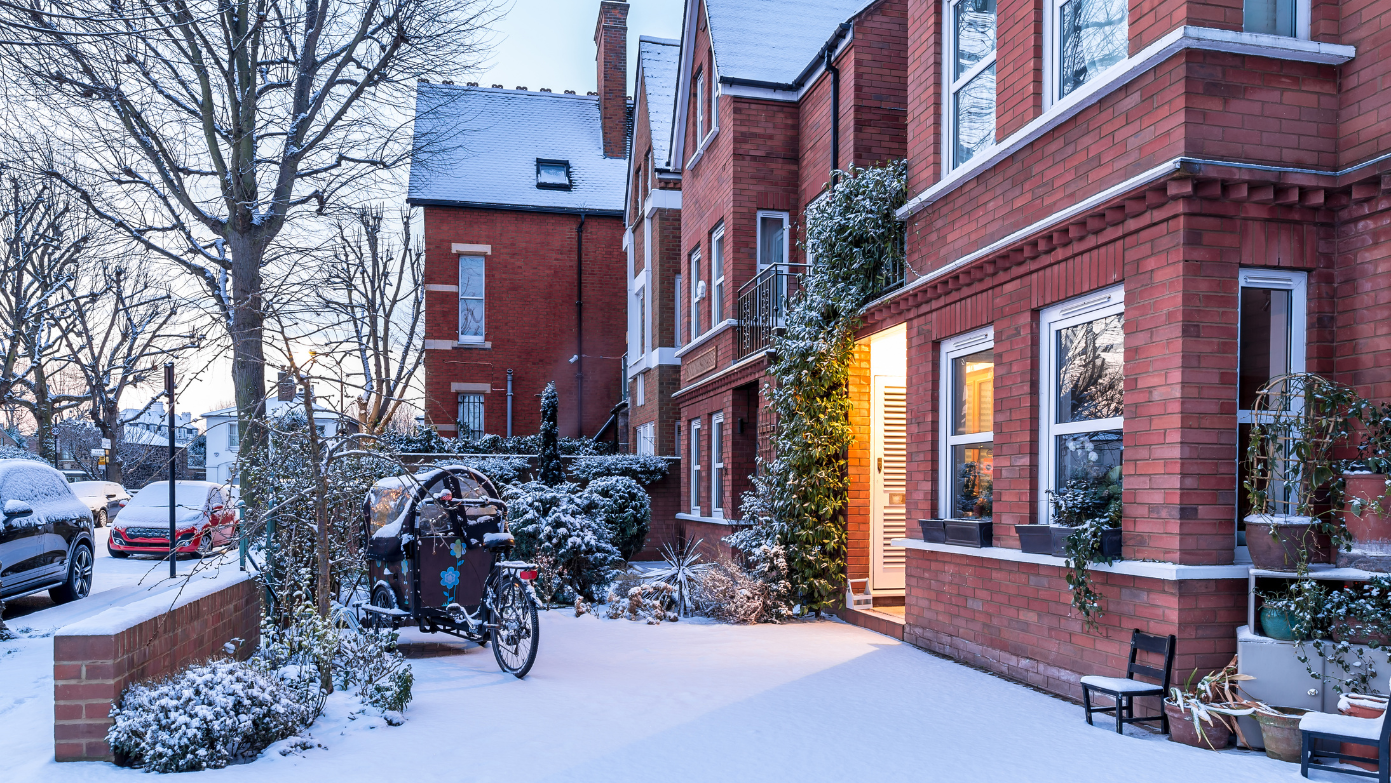How to Keep Your House Warm in Winter (UK Guide for Homeowners & Landlords)

Winter comfort is about more than cosy evenings. A warm home protects your health, your building, and your wallet. Below is a practical guide for UK homeowners and landlords.
Simple steps you can do now
- Shut out draughts. Fit self-adhesive seals around doors and windows. Add brush strips to letterboxes and keyholes. If a fireplace is unused, use a chimney draught blocker. See guidance from the Energy Saving Trust.
- Use curtains smartly. Open south-facing curtains on sunny days. Close all curtains and blinds at dusk to trap heat. Thermal linings help.
- Bleed radiators. Cold spots at the top mean trapped air. Bleed and check the pressure so the radiators heat evenly. Tips from Energy Saving Trust.
- Move furniture. Don’t block radiators with sofas or long curtains.
- Layer your floors. Lay rugs on bare floors to cut heat loss and make rooms feel warmer.
- Lag pipes and the hot-water cylinder. Foam sleeves and a proper cylinder jacket reduce heat loss and help prevent frozen pipes.
Big wins: insulation and fabric upgrades
Heat escapes through the roof, walls, windows, floors, and gaps.
- Loft/roof insulation. Topping up loft insulation is one of the best value upgrades. Check depth and continuity. Avoid blocking eaves ventilation. Guidance: Energy Saving Trust – Loft insulation.
- Cavity wall insulation. If your home has cavity walls, professional injection can make a big difference. Learn more: Energy Saving Trust – Cavity walls.
- Solid wall insulation. For older homes with solid walls, consider internal (insulated plasterboard) or external systems. Use breathable solutions and expert advice to avoid damp. See Historic England – Insulating Solid Walls.
- Floors. For suspended timber floors, insulate between joists. Seal gaps along skirting and between boards. More help: Energy Saving Trust – Floor insulation.
- Windows. Double or triple glazing cuts heat loss. Where you can’t change windows (listed properties), fit secondary glazing and use heavy, well-fitted curtains. See Historic England – Secondary Glazing.
Make your heating work harder (so you don’t have to)
- Thermostat and timers. Set the lowest comfortable temperature and use programmers for your routine. Smart thermostats and smart TRV heads can heat rooms only when needed.
- Zoning and TRVs. Keep spare rooms cooler; keep living areas comfortable. Close internal doors to “zone” the home.
- Boiler care. Service annually. Consider upgrading very old, inefficient models.
- Hot water. Set the cylinder thermostat correctly. Schedule water heating, not 24/7.
For health guidance on staying warm (especially for older or vulnerable people), see NHS winter health advice.
When the clocks go back: adapt your routine
In the UK, clocks go back one hour on the last Sunday in October (26/10/2025). Darker evenings change how and when you use heating and lights. A few simple tweaks keep comfort high and costs down:
- Update timers and smart schedules. Check boiler programmers, room thermostats, TRV schedules, and hot-water times. If you had “6:30am heat-on” in BST, confirm it still matches your wake-up in GMT.
- Curtains earlier. Close curtains and blinds before dusk to keep warmth in. Shorter days mean heat loss starts earlier.
- Frost protection. If you’re away overnight as temperatures drop, use frost settings to protect pipes.
Landlords: warmth, compliance, and happier tenants
- Know the standards. Private rentals must meet minimum energy efficiency rules (EPC). Improving insulation and heating helps compliance and reduces complaints. See Gov.uk – EPC for landlords.
- Prevent issues. Cold, under-heated homes are prone to damp, mould, and burst pipes. Insulate hot- and cold-water pipes, set frost protection, and leave guidance for tenants on safe minimum settings when they travel.
- Work together. Encourage tenants to report draughts, broken seals, or cold rooms early. Some upgrades may be eligible for support schemes. See Energy Saving Trust – Grants and support.
Winter warmth checklist
- Seal obvious draughts (doors, windows, letterbox, chimney).
- Top up loft insulation; plan wall and floor upgrades.
- Bleed radiators; move furniture away from heat sources.
- Set smart schedules; review settings after the clock change.
- Close curtains at dusk; use lined or thermal curtains if you can.
- Lag pipes and the cylinder; know where your stop tap is.
Stay warm and stay covered
Even well-prepared homes can face winter surprises like burst pipes or storm damage. A good policy helps you bounce back fast. If you’d like cover that suits your home’s needs (including unoccupied periods or higher-risk homes), take a look at our home insurance. Letting a property? Explore our tailored landlord insurance.
Our latest articles.
The latest news and advice from our industry experts.




